In 2017, Richard Clegg explained the work made by MPC on Blade Runner 2049. He went on to work on The Nutcracker and the Four Realms and The Call of the Wild before joining Outpost VFX in 2020, where he supervised many shows including Project Power, Foundation, Slumberland and Renfield.
How did you and Outpost VFX get involved on this show?
Many members of our senior team here in Montreal have worked closely with Overall VFX Supervisor Charley Henley in the past and it was really great to reconnect with him on this show. He came to us for our environment and crowd expertise as a lot of that kind of work was required for the film.
How was the collaboration with director Ridley Scott and VFX Supervisor Charley Henley?
It was great! Ridley is a fantastic director for VFX teams to work with – he has a lot of experience across a diverse array of genres and a very precise idea of what he wants from every shot. Charley clearly has Ridley’s confidence. That, combined with Charley’s attention to detail and extensive efforts to provide great material for vendors like us, made the whole process smooth and a lot of fun.
What was their approach and expectations about the visual effects?
As I’ve mentioned, Ridley has a very clear idea of what he wants. One of our sequences was set in Egypt and featured the Great Sphinx of Giza and Pyramids. Ridley was in love with Jean-Leon Gerome’s “Bonaparte Before the Sphinx” painting and used that as inspiration and a compositional goal to hit. Charley provided some great post-vis for the pyramids to guide us and allow us to hit the ground running. We then took these ideas and tweaked the composition to get as much geographical accuracy as possible. The expectations were obviously that everything needs to look photoreal. This is a historical drama and so it’s important to keep the audience in the moment and push for authenticity.
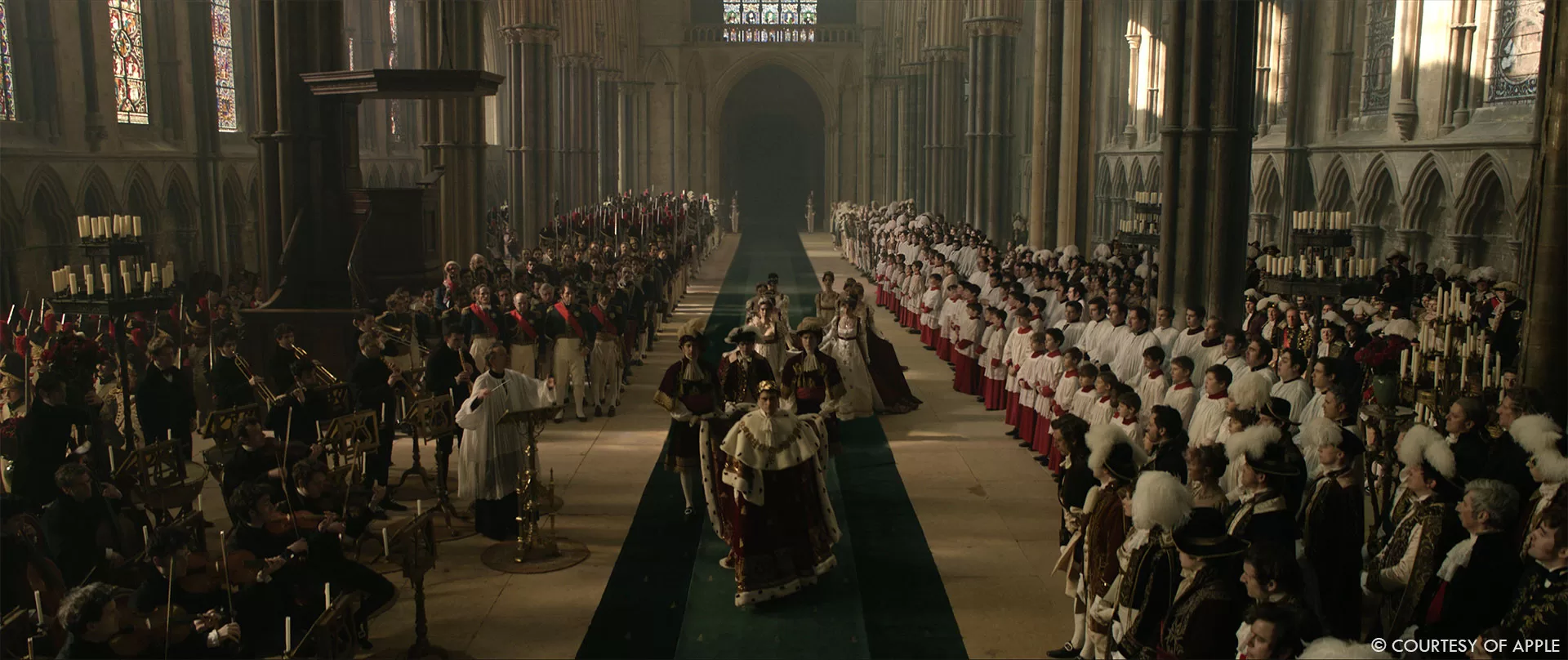
How did you organize the work your VFX Producer?
Like any project, we quickly identified key shots to lock down all creative questions early and ensure we were on a path that Charley and Ridley would be happy with. After that we scheduled and resourced out the bulk of the work to fit specific project timelines.
What are the sequences made by Outpost VFX?
We had the opportunity to work on several key story beats in Napoleon, taking in a wide array of locations and themes. These included Napoleon’s invasion into Egypt, his coronation, a sequence at Château de Malmaison and the Cossack ambush and subsequent fighting.
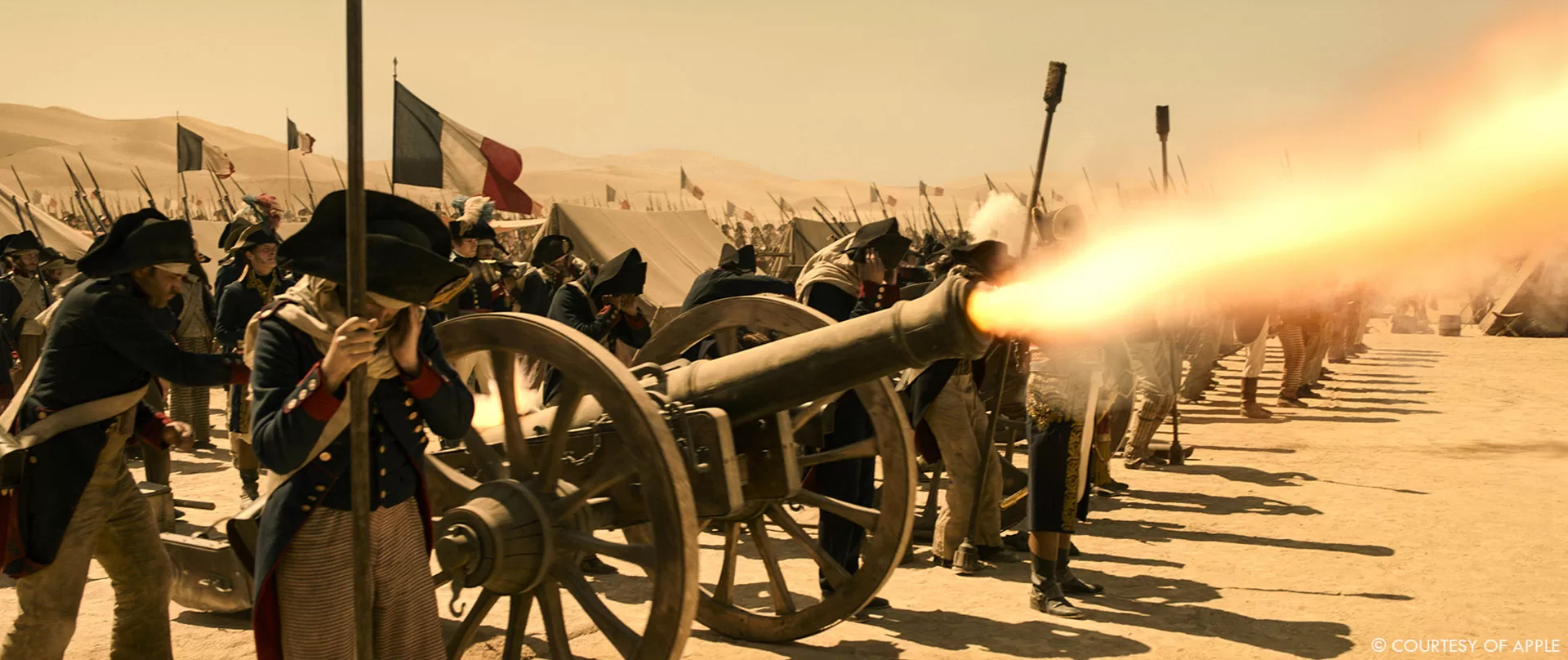
Where was filmed your sequences?
Multiple locations in the UK, Morocco and France I believe.
Can you elaborate about the creation of the pyramids and the Sphinx?
The Sphinx shot was compositionally based on the famous painting “Bonaparte Before the Sphinx”, which Ridley loved. The pyramid shot compositions were based on some post vis that Charley had created. The plates were shot out in Morocco and our challenge was taking all the ingredients we were given, pushing for geographical accuracy and keeping a sense of scale and then adding crowd into the backgrounds to significantly multiply the very small number of extras captured in camera. For all the shots we built 3D geometry that we then lit and rendered, then finished off with some DMP on top of the CG renders to add extra weathering and other details.
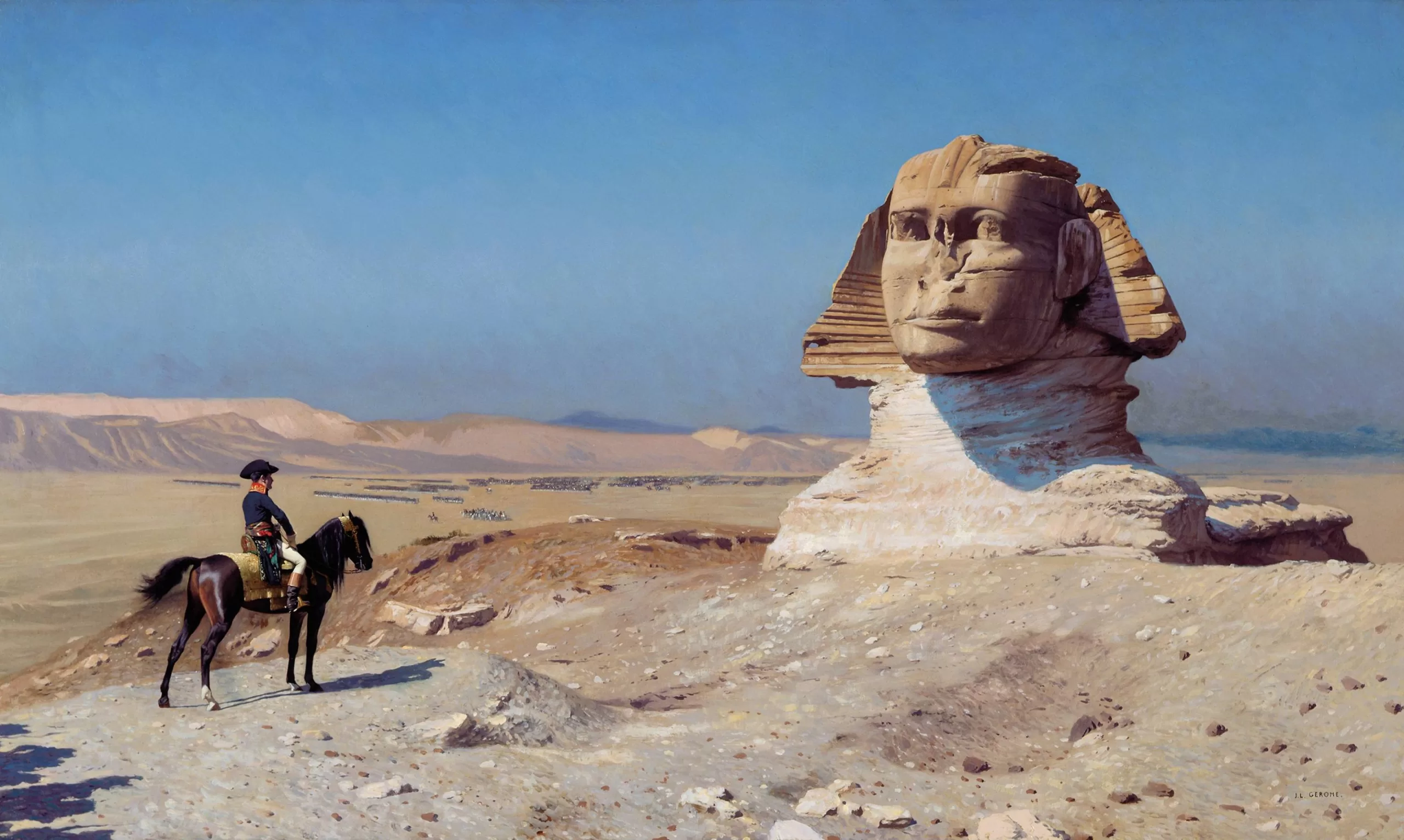
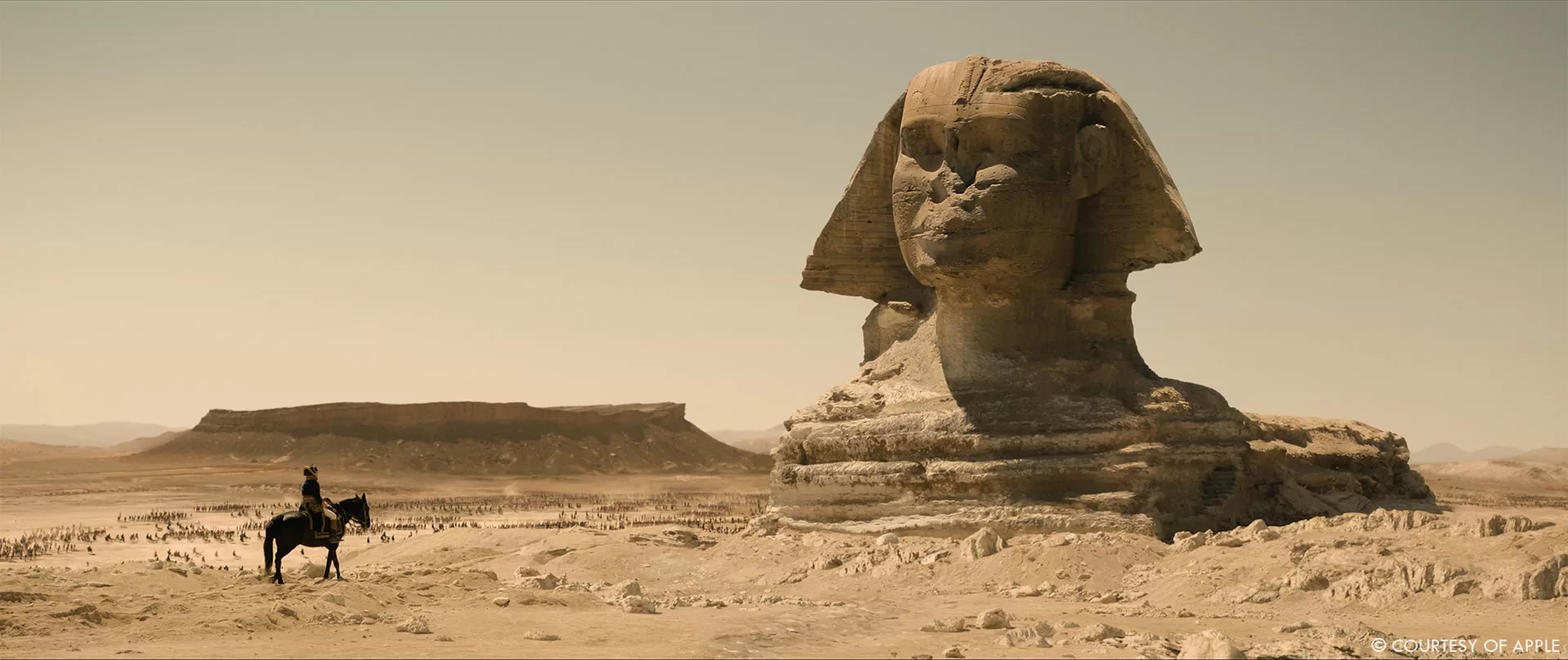
What was the main challenge with the environments work?
Scale! The shots are very wide, so getting the right amount of detail into them was important. We also wanted to push for as much accuracy as possible. We took satellite data from the real location as our base then tweaked the camera framing and landscape geometry slightly to get the desired composition.
Which location was the most complicate to create?
I think the Egypt sequence was the most extensive build, but for the Cossack ambush we had some tricky cleanup and patch work to do. The location was supposed to be very remote, but there was evidence of trodden footpaths, etc, where we need to add CG grass, moss and rocks to cover them up. This was made even more tricky as the cameras were moving and we had live action as well as a large amount of CG horses and soldiers running on top.
Can you explain the creation of the shot showing the impact of the cannonball on the pyramid?
Scale was again a challenge. The cannon fire emanated from close to camera and made contact with the pyramids that were quite far away. Narratively, this was supposed to intimidate the local enemy and so it was important that we saw a menacing impact from the cannon fire on the pyramid. It was a balancing act to get it big enough to feel threatening but not too large to break the scale and make no sense.
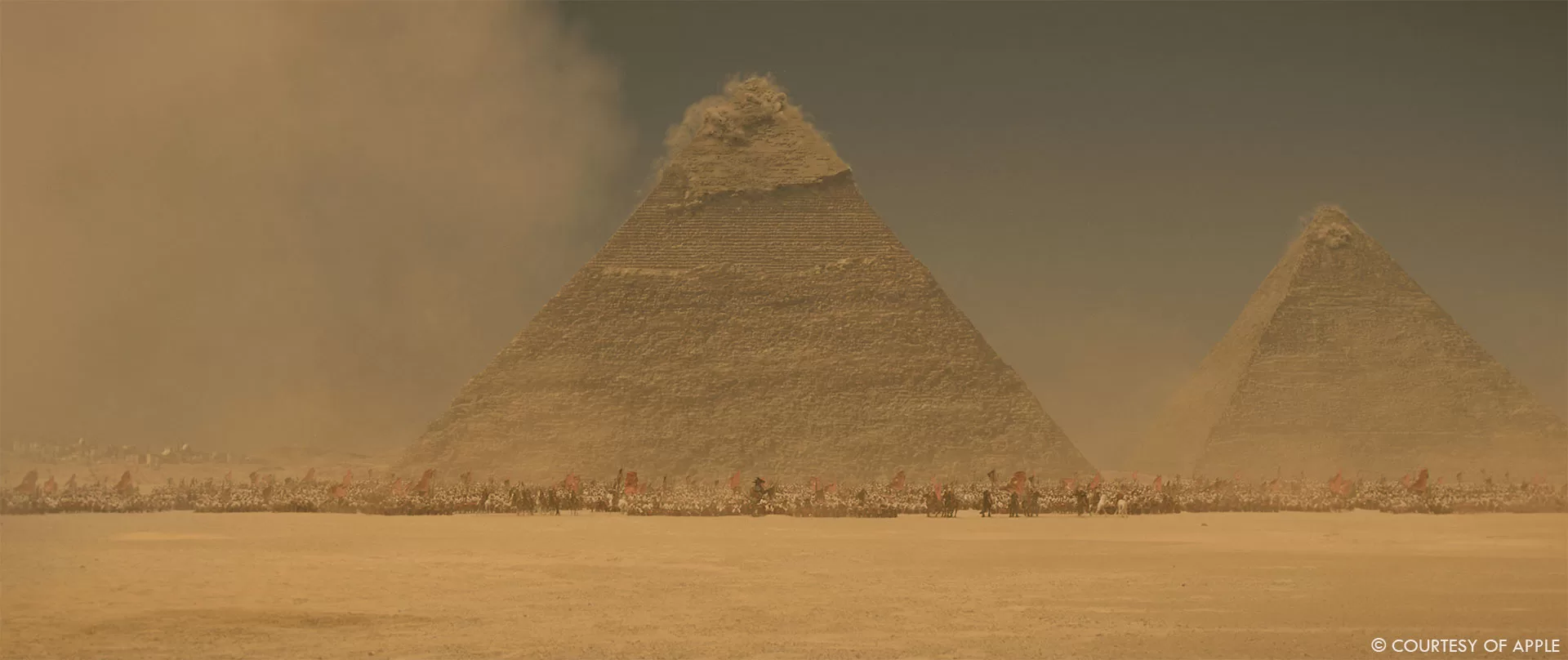
How did you create the armies?
Our crowd was a mixture of fully CG and 2D elements. For the CG crowd, we inherited some base soldier assets from another vendor and then had to make extensive costume tweaks to fit to our sequence. One of the biggest challenges there was that no soldier had consistent uniforms. Some had black pants, some had white. Also, their hats, jackets, boots and shirts were all different combinations and configurations. We had to put careful consideration into number of variations we built as it was important to avoid repetition and keep the messy feeling without overcomplicating the composition.
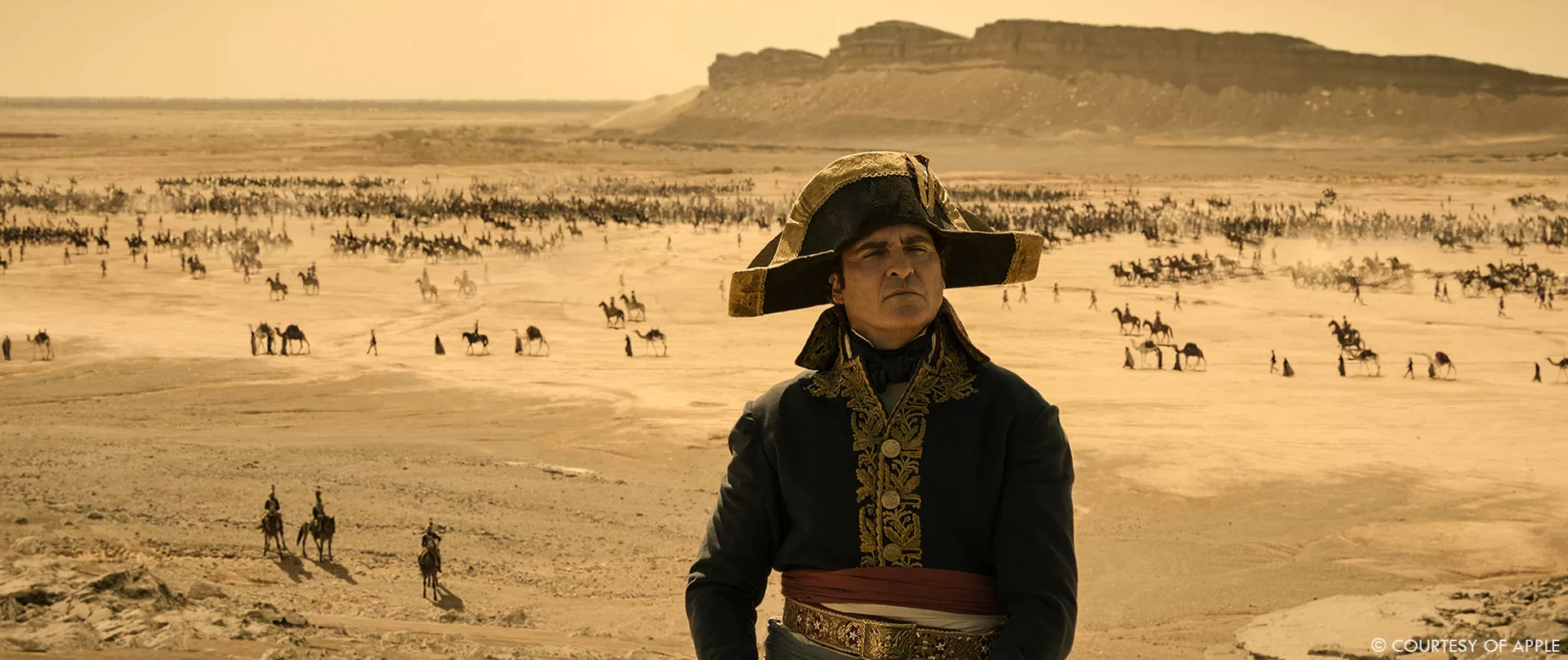
Can you tell us more about the crowd animations?
We mostly used some standard clips with a couple of hand animated or hand tweaked variations. We’d lay down an initial crowd simulation in Houdini using the stock clips. Often in shots we’d pick out one or two crowd agents and then take over with some manual hand animation to give the crowd some extra authenticity and movement details. It’s important to break up uniformity in crowd shots.
Which sequence or shot was the most challenging?
For our environments team, the Egypt sequence, for Comp, the coronation sequence (some complex plate stitches with non-motion-controlled camera rigs) and for our Crowd and Animation teams it was the Cossack ambush as we had lots of niche movements and performances in that scene.
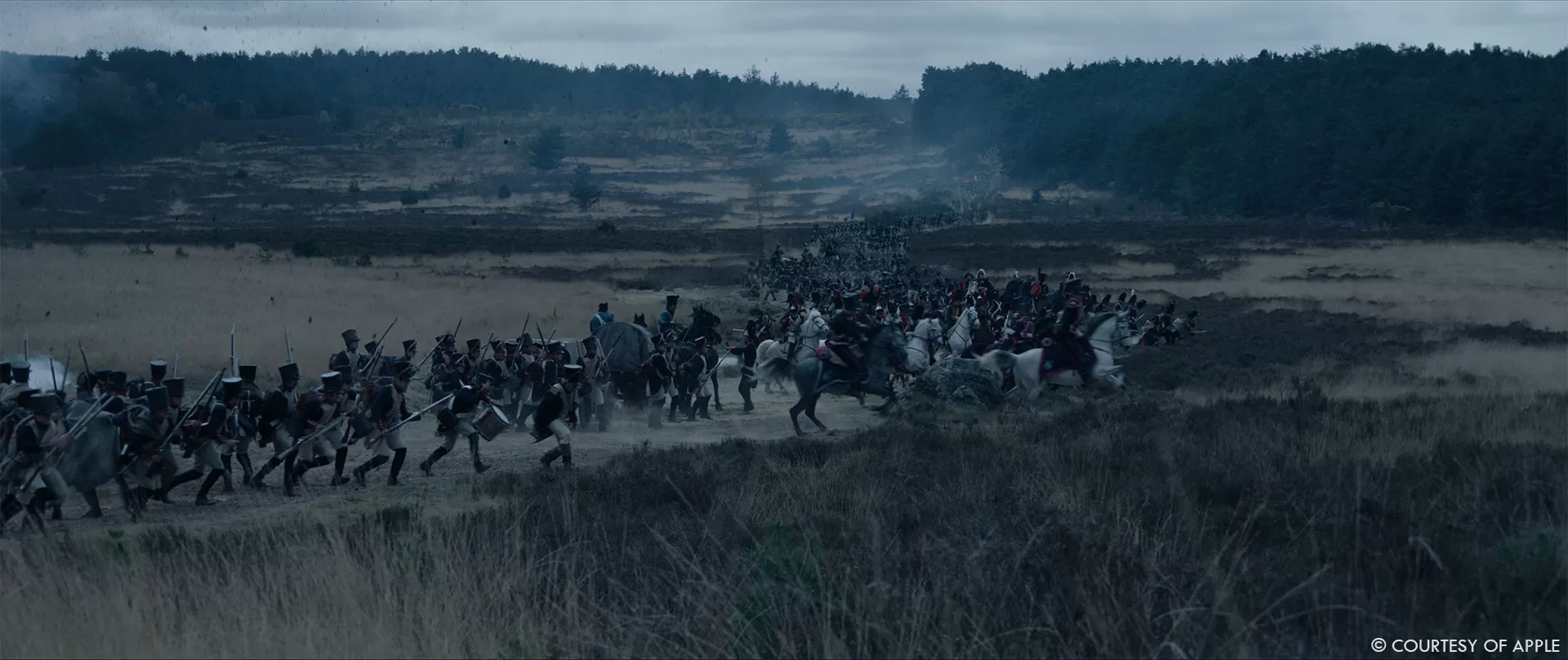
Is there something specific that gives you some really short nights?
Not really. The project was a smooth one and it was a great pleasure to be a part of it. We’re very proud of our work and the film as a whole.
What is your favorite shot or sequence?
The cannon ball hitting the pyramids. It’s a simple shot, but I just like it!
What is your best memory on this show?
Hearing Ridley Scott tell Charley our work looks “f*****g great” was a high point for sure.
How long have you worked on this show?
Our team at Outpost worked on the project for around five months.
What is your next project?
Lots that we can’t tell you about just yet I’m afraid! We’ve recently finished a few shows that have all come out in quick succession, things like the new Hunger Games movie, Monarch: Legacy of Monsters, Wonka and Napoleon, of course. We’re currently sole vendor on Bob Marley: One Love, which is out in a couple of months.
A big thanks for your time.
WANT TO KNOW MORE?
Outpost VFX: Dedicated page about Napoleon on Outpost VFX website.
Charley Henley: Here’s my interview of Production VFX Supervisor Charley Henley.
© Vincent Frei – The Art of VFX – 2023






